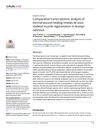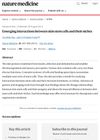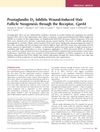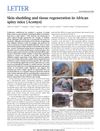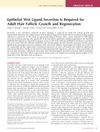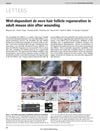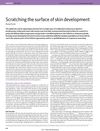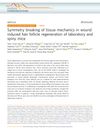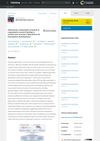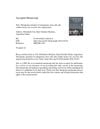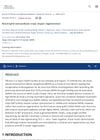Comparative Proteomic Analysis in Scar-Free Skin Regeneration in Acomys Cahirinus and Scarring Mus Musculus
January 2020
in “
Scientific Reports
”
scar-free skin regeneration Acomys cahirinus Mus musculus protein degradation protein synthesis cell cycle survival mechanisms ubiquitin/proteasome pathway Wnt pathway cell migration inflammatory response fibrotic extracellular matrix arginase macrophages proteomic differences fibrotic responses wound healing in-gel tryptic digestion LC-MS/MS analysis Western blot analysis scar-free healing African spiny mouse house mouse protein breakdown protein creation cell division cell survival ubiquitin pathway Wnt signaling cell movement inflammation fibrosis arginase enzyme immune cells protein differences scar formation healing process tryptic digestion mass spectrometry Western blot
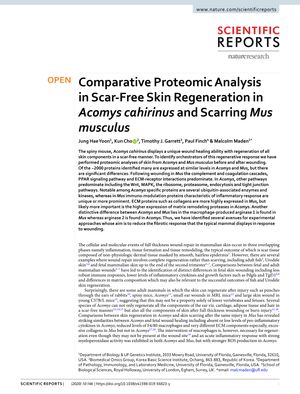
TLDR The African spiny mouse heals skin without scarring due to different protein activity compared to the common house mouse, which heals with scarring.
The document summarizes a study that compared the skin healing processes of the African spiny mouse (Acomys cahirinus), which can regenerate skin without scarring, to the common house mouse (Mus musculus), which heals with scarring. The study identified approximately 2000 proteins, with significant differences in expression post-wounding. Acomys showed higher activity in pathways related to protein degradation/synthesis, cell cycle, and survival mechanisms, such as the ubiquitin/proteasome pathway, Wnt pathway, and increased expression of proteins associated with cell migration. In contrast, Mus exhibited a stronger inflammatory response and a more fibrotic extracellular matrix. The presence of different types of arginase in the macrophages of each species was also noted. The study suggests that these proteomic differences contribute to the scar-free healing observed in Acomys and provides potential targets for reducing fibrotic responses in mammalian wound healing. The methodology included in-gel tryptic digestion, LC-MS/MS analysis, stringent data validation, identification of differentially expressed proteins, functional enrichment analysis, and Western blot analysis, with data made available in the MassIVE repository.
